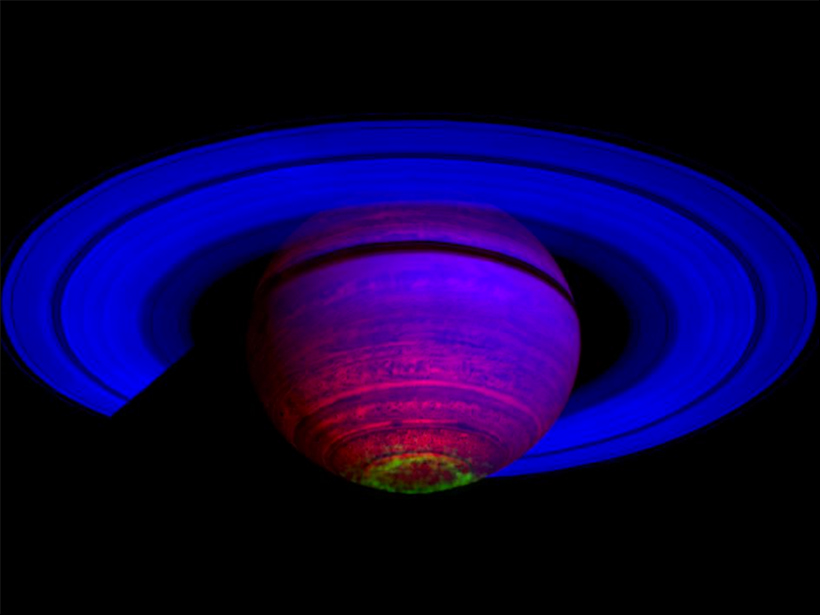Source: Journal of Geophysical Research: Space Physics
Magnetospheres are regions of space that are heavily influenced by the magnetic field of a nearby planet and can contain charged particles in the form of plasma from both external and internal sources. Earth’s magnetosphere, for instance, is filled mostly with particles from the solar wind or, during periods of strong geomagnetic activity, its ionosphere—a region above 85 kilometers in which solar radiation strips molecules of their electrons to produce ions. In the case of Saturn, its moon Enceladus spews out water that is then ionized into H2O+, O+, and OH+—the so-called water group ions—which are then transported throughout the magnetosphere.
At Earth, increased geomagnetic activity or compressions in the magnetosphere can increase the number of particles flowing out into the magnetosphere. This ionospheric outflow happens most easily at the poles, where the magnetic field lines open into a characteristic tail dragged out behind the planet by the solar wind.
Here Felici et al. report on an event measured by the Cassini spacecraft while it was traversing Saturn’s magnetotail. At the time of the measurement, Saturn was undergoing a magnetospheric compression, and Cassini remotely observed aurora on Saturn’s north pole. The composition of particles Cassini was measuring in the magnetotail was also different from normal. The water group ions disappeared, but in their place, Cassini measured particles much more consistent with what would be expected for ionospheric outflow coming from Saturn’s upper atmosphere.
By measuring the flux of particles in the magnetotail and mapping them to the auroral outflow region, the researchers calculated that the total amount of mass emitted per second may be as large as the rate at which mass is spewed from Enceladus. It is unknown how much of this mass stays in the magnetosphere and how much escapes down the magnetotail and joins with the solar wind.
These are the first measurements that investigate what role ionospheric outflow plays at a giant planet and give a more dynamic picture of what Saturn’s magnetosphere is like. Cassini is approaching its grand finale, where the new orbital configuration will allow an even clearer picture of what role the ionosphere may play as a mass source at Saturn. These studies will be complementary to the Juno mission, which is also interested in sources of magnetospheric composition. Juno is due to arrive at Jupiter in July 2016. (Journal of Geophysical Research: Space Physics, doi:10.1002/2015JA021648, 2016)
—Rachael Jensema, Freelance Writer
Citation: Jensema, R. (2016), Cassini observes first evidence of Saturn’s ionospheric outflow, Eos, 97, doi:10.1029/2016EO045013. Published on 5 February 2016.
Text © 2016. The authors. CC BY-NC 3.0
Except where otherwise noted, images are subject to copyright. Any reuse without express permission from the copyright owner is prohibited.

